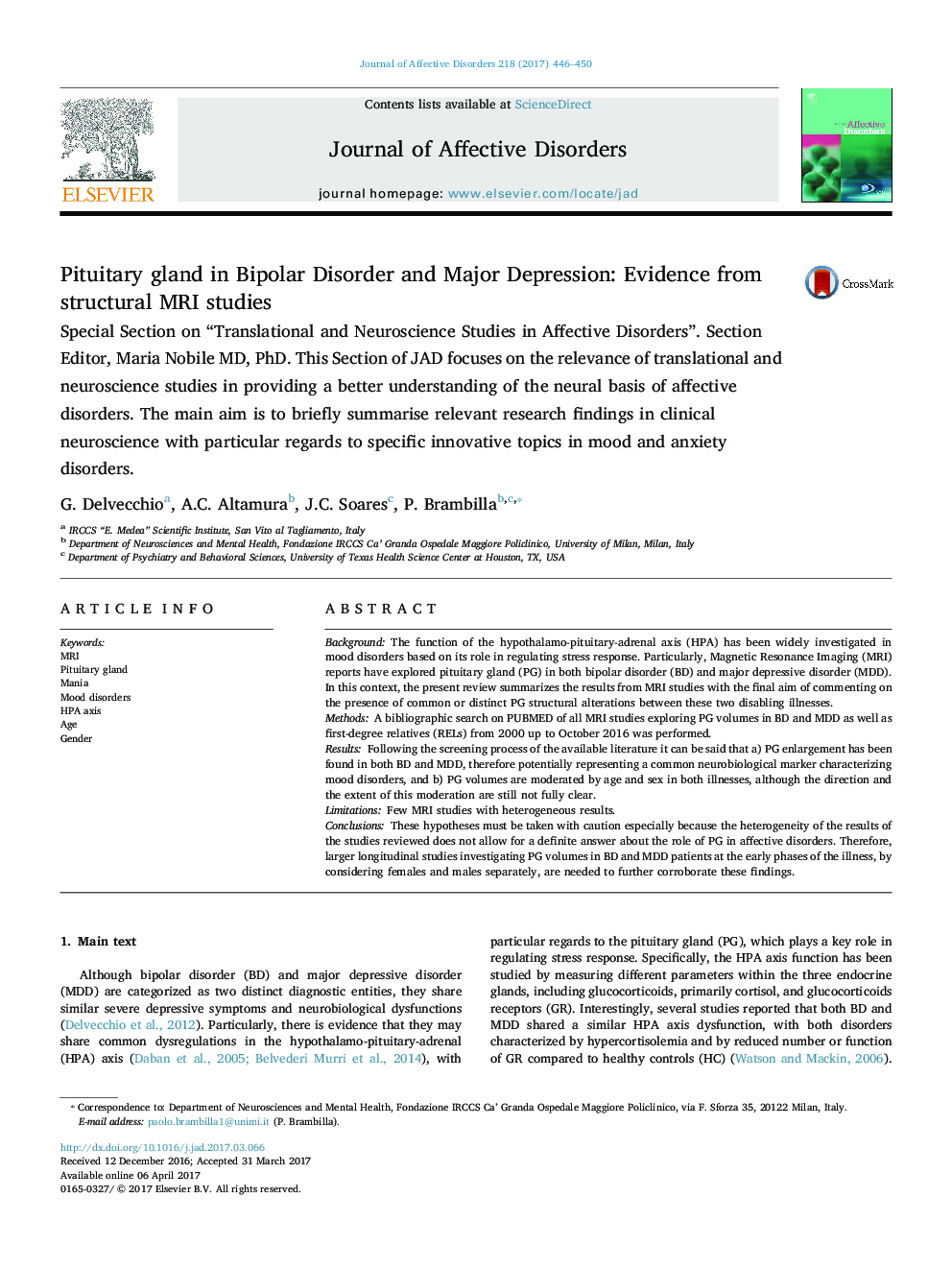| کد مقاله | کد نشریه | سال انتشار | مقاله انگلیسی | نسخه تمام متن |
|---|---|---|---|---|
| 5721979 | 1608107 | 2017 | 5 صفحه PDF | دانلود رایگان |

- This review summarizes the MRI studies investigating pituitary gland in bipolar disorder or major depressive disorder.
- Enlargement of PG has been found in both BD and MDD, being moderated by age and sex in both illnesses.
- Larger longitudinal MRI studies are needed to explore PG in BD and MDD patients at the early phases of the illness.
BackgroundThe function of the hypothalamo-pituitary-adrenal axis (HPA) has been widely investigated in mood disorders based on its role in regulating stress response. Particularly, Magnetic Resonance Imaging (MRI) reports have explored pituitary gland (PG) in both bipolar disorder (BD) and major depressive disorder (MDD). In this context, the present review summarizes the results from MRI studies with the final aim of commenting on the presence of common or distinct PG structural alterations between these two disabling illnesses.MethodsA bibliographic search on PUBMED of all MRI studies exploring PG volumes in BD and MDD as well as first-degree relatives (RELs) from 2000 up to October 2016 was performed.ResultsFollowing the screening process of the available literature it can be said that a) PG enlargement has been found in both BD and MDD, therefore potentially representing a common neurobiological marker characterizing mood disorders, and b) PG volumes are moderated by age and sex in both illnesses, although the direction and the extent of this moderation are still not fully clear.LimitationsFew MRI studies with heterogeneous results.ConclusionsThese hypotheses must be taken with caution especially because the heterogeneity of the results of the studies reviewed does not allow for a definite answer about the role of PG in affective disorders. Therefore, larger longitudinal studies investigating PG volumes in BD and MDD patients at the early phases of the illness, by considering females and males separately, are needed to further corroborate these findings.
Journal: Journal of Affective Disorders - Volume 218, 15 August 2017, Pages 446-450